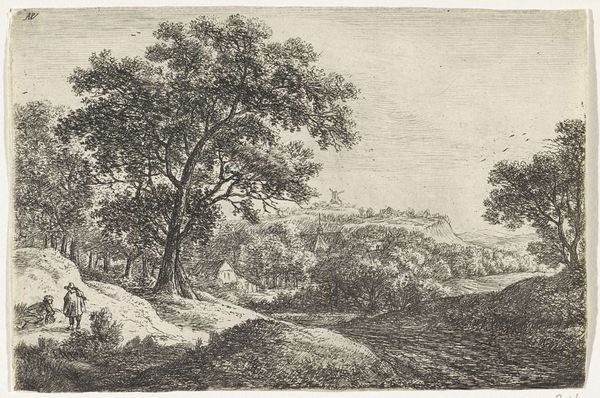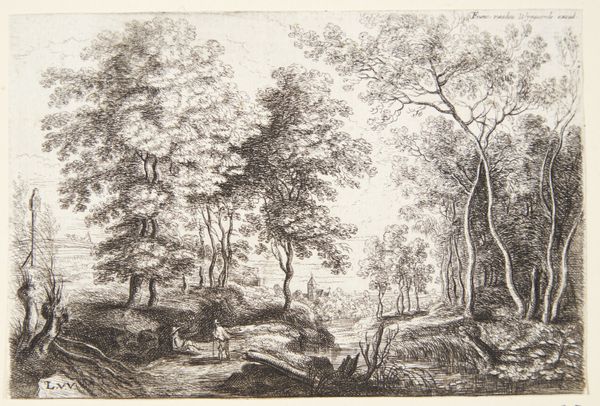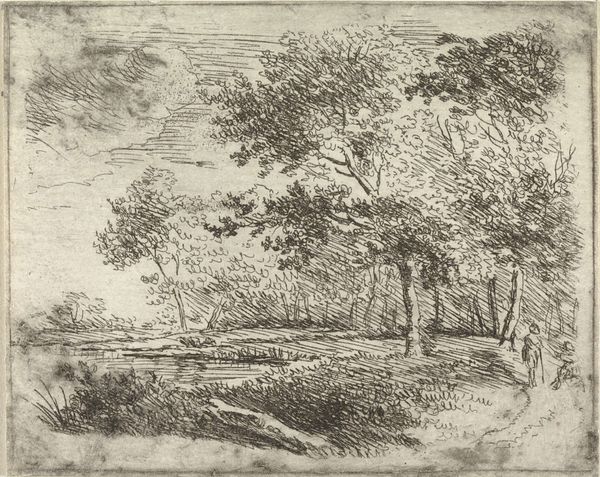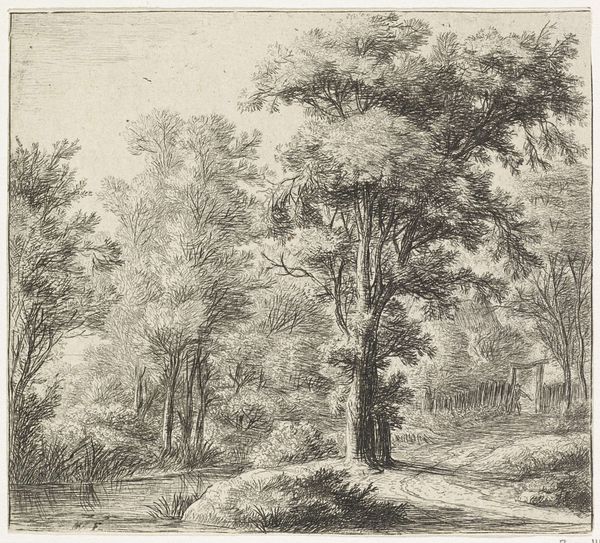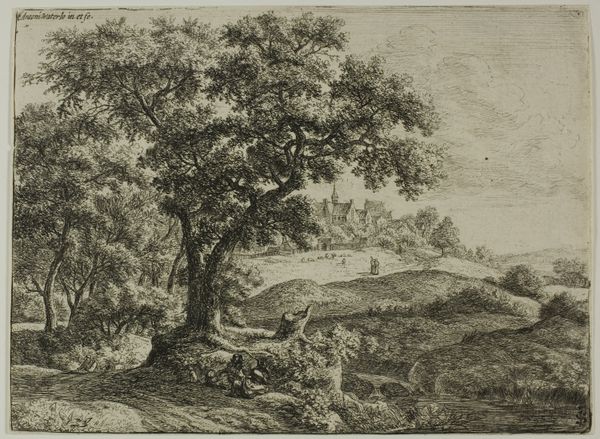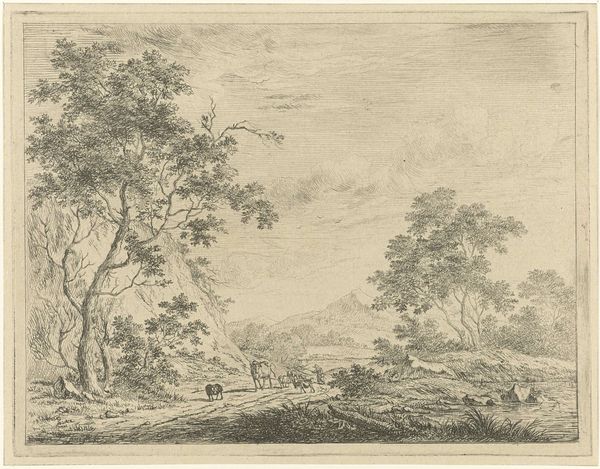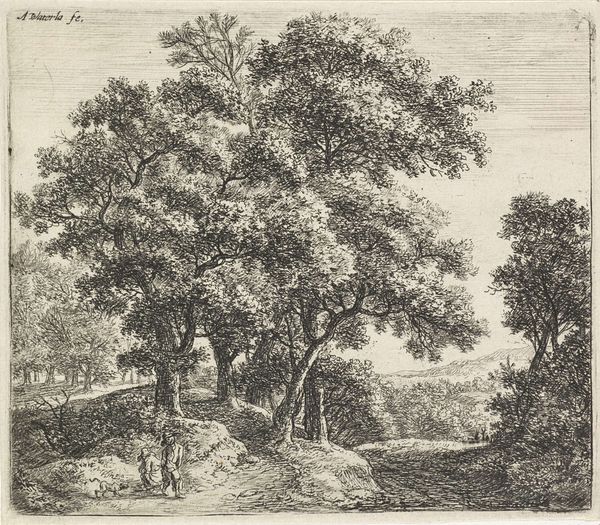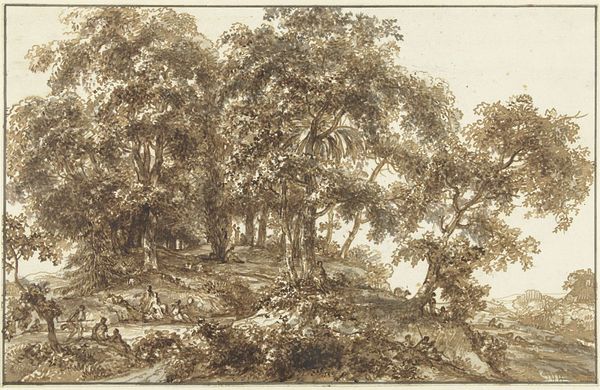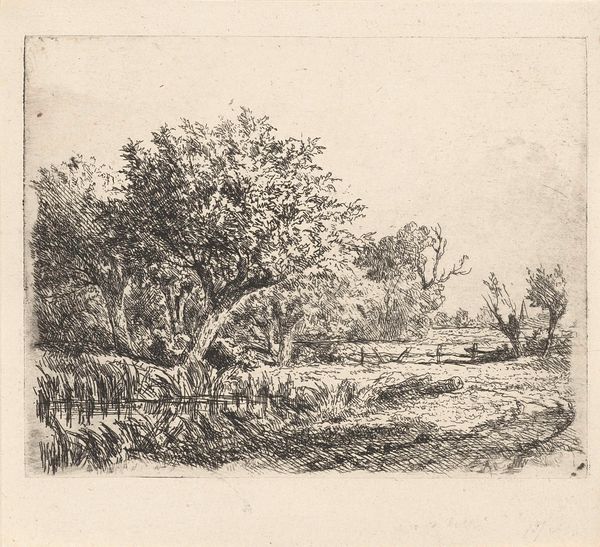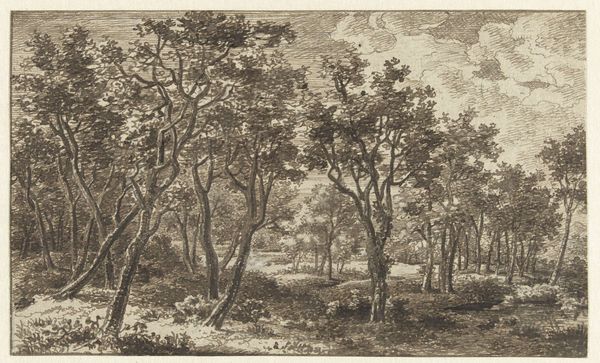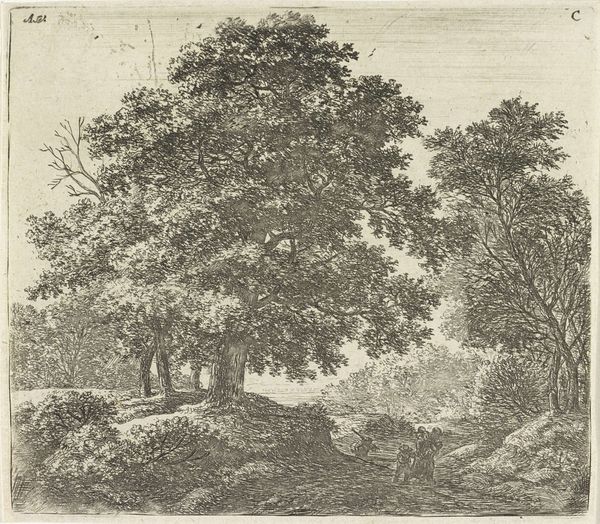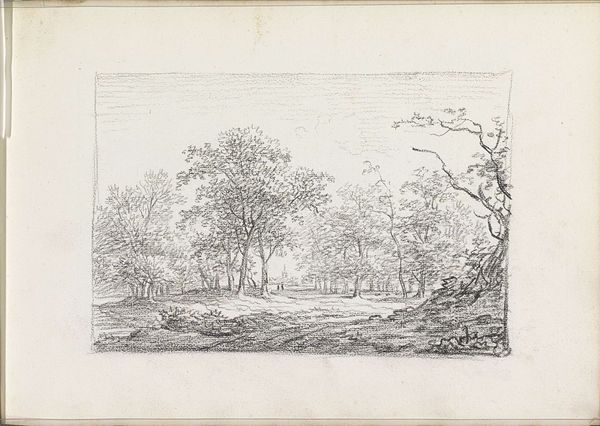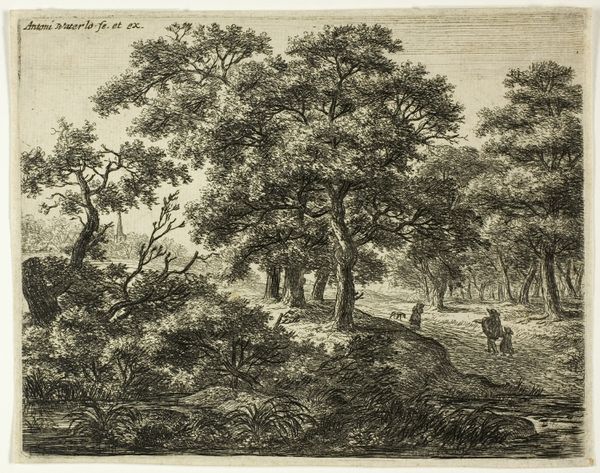
drawing, print, etching, ink
#
drawing
#
ink painting
# print
#
etching
#
landscape
#
ink
#
realism
Dimensions: 6 9/16 x 4 15/16 in. (16.67 x 12.54 cm) (plate)6 3/4 x 5 1/4 in. (17.15 x 13.34 cm) (sheet)
Copyright: Public Domain
Editor: Charles-Émile Jacque created "Landscape after Hobbema" in 1851. It's an etching, showcasing a serene landscape scene. I’m struck by the incredible detail achieved through the etching technique. What do you see in this piece beyond just a picturesque landscape? Curator: Beyond the picturesque, this piece operates within a complex system of artistic influence and the burgeoning market for prints in the 19th century. Jacque's choice to create a "landscape after Hobbema" speaks volumes. He is deliberately engaging with a master of Dutch Golden Age painting, signaling his artistic lineage and, perhaps, staking his claim within a specific genre tradition. The rise of printmaking made art more accessible, democratizing the image but also turning artistic interpretation into a commodity. Editor: So, it's less about Jacque simply admiring Hobbema, and more about positioning himself in the art world? Curator: Precisely. Think about who would purchase such a print. It wouldn't be someone who could necessarily afford an original Hobbema. This etching served as both an accessible artwork and a signifier of taste and cultural capital. The institutional validation of Hobbema meant Jacque could borrow prestige and visibility. Do you notice any particular details in the landscape that might relate to this socio-economic context? Editor: Now that you mention it, the figures walking along the path almost seem staged. It gives it a sense of leisurely activity and maybe alludes to property or land ownership. Curator: Exactly. Consider, too, the historical context of the mid-19th century. Landscapes weren't simply neutral depictions of nature; they were often intertwined with ideas of nationhood, ownership, and the romanticization of rural life at a time of increasing urbanization and industrialization. Editor: That adds a whole new layer to what I initially saw as just a peaceful landscape. It's interesting how deeply historical context can affect how we see a work of art. Curator: Indeed. This piece, at first glance a pleasant scene, reflects complex dynamics within the art world, social structures, and even emerging national identities. It urges us to consider how artworks gain meaning through historical and cultural positioning. Editor: I’ll definitely look at art through a different lens from now on! Curator: Wonderful, that's precisely the goal.
Comments
No comments
Be the first to comment and join the conversation on the ultimate creative platform.
